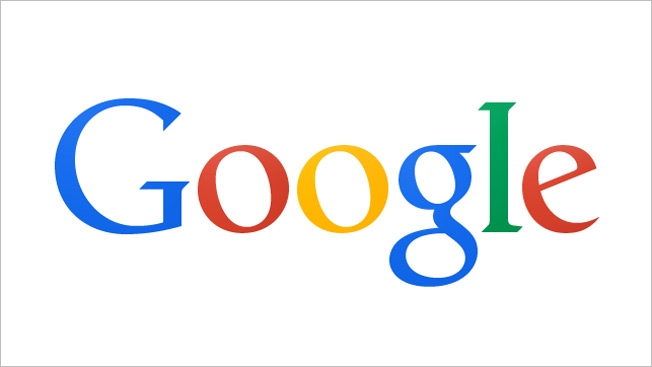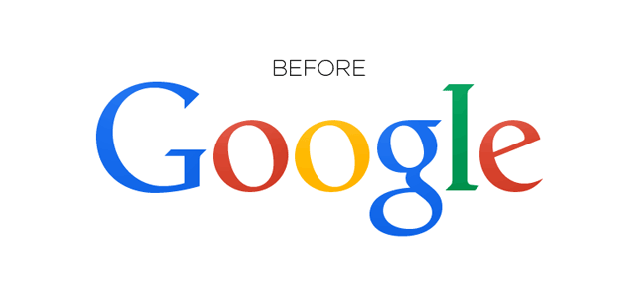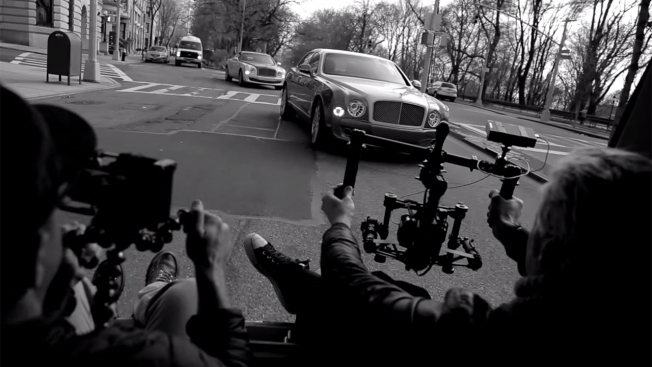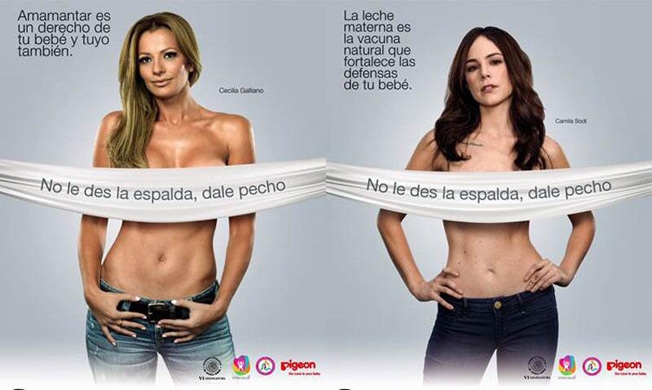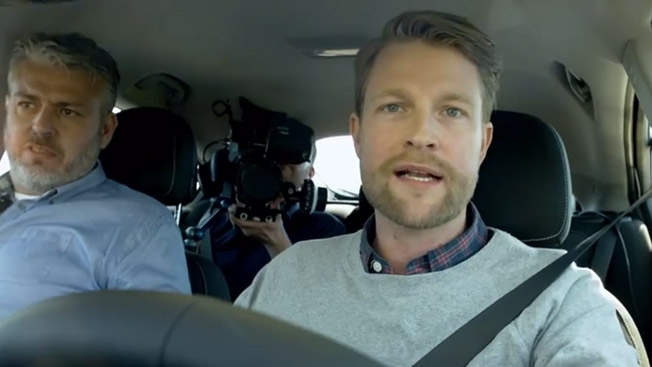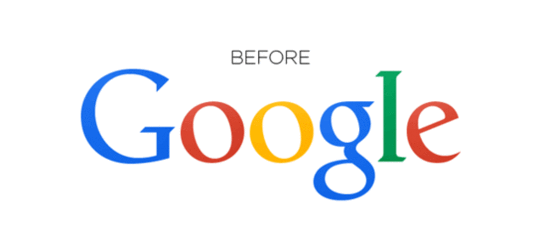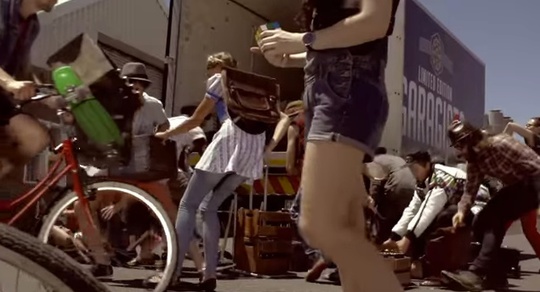
Over the last few weeks, we heard that Facebook organic reach is approaching zero while their paid ad business is booming. On April 23, Facebook reported revenue of $2.5 billion for the first quarter of 2014, up 72% over the previous year. Advertising accounted for $2.27 billion of Q1 revenue. Now, it seems that Instagram and Pinterest want a piece of the paid advertising pie, and they’re not afraid to charge a lot per slice.
However, social networks like Instagram and Pinterest will not succeed by trying to replicate the broadcasting advertising model. Broadcasting does not work in the Social Era, as numerous studies have shown. In fact, online social media ads are even more ignored than TV ads, according to Harris Interactive.
So, are Instagram and Pinterest fixed on helping brands become just as ignored on social media as they are on TV? Clearly not, but they are looking for ways to monetize their audience, and with organic reach on social media dropping to zero, many brands will feel compelled to pay. There is, however, another way they can still reach consumers on these social networks.
Social Networks Now Demand Millions Monthly
According to Ad Age, Pinterest wants between $1 million and $2 million monthly from prospective advertisers, and aims to price CPMs between $30 and $40. Ad Age also said that Instagram wants to charge somewhere between $500,000 and $1,000,000 for monthly buys, but the ultimate CPMs will be based on targeting, frequency and reach. Instagram recently scored an early win – a year-long, upfront deal with Omnicom for around $100 million – so the move to advertising on more social networks has begun.
While these fees might sound like big money, the actual spending pales in comparison to TV ads. While digital ads account for 4.5% global spend, according to Nielsen, television still accounts for 57.6%. For some more perspective, in fall 2013, a 30 second ad during “The Big Bang Theory” cost $326,260 – as in six figures per 30 second slot. Each placement during NBC’s “The Voice” cost $264,575. In other words, you could spend more than $1 million in a single night by running four TV ads.
While you will need to commit similar dollars to advertise on Pinterest and Instagram, that fee is spread out over a month, rather than a single night. However, brand marketers who have already spent millions building their fan and follower base are now being told that they need to pay additional millions to reach the base they built. The marketers who promised their companies big reach at a big discount now look forward to an uncomfortable internal conversation about where paid advertising money will come from.
So, Instagram and Pinterest aren’t asking for much relative to primetime TV, but they are asking a lot when brands are used to paying nothing.
Consumers Will Ignore the Million Dollar Ads – On Any Network
People love TiVo and DVRs because they can skip through commercials (and never miss an episode of “The Big Bang Theory”). In fact, YouGov found in 2010 that 86% of people always fast-forwarded through advertisements while watching time-shifted shows. People pay up for Pandora One for the ad-free listening. The Daily Show and Colbert Report fans are now furious that they have to watch three or four online ads in a row just to find out what’s going on the world.
In a world overflowing with content, people do not need to endure forced advertising. They can pay for premium ad-free content services (Hulu, Netflix, Amazon Prime, etc.), or they can simply get their content somewhere else. If you can turn The Daily Show into a 20 minute ordeal instead of a 30 minute one by using your DVR and skipping the ads, many people feel it’s worth watching a half hour after the original broadcast.
If people will pay one brand to avoid watching another brand’s commercials, why are Instagram and Pinterest so eager to irritate their users? Because some brands will pay huge amounts to reach their audience, and the social networks will get the revenue they need to fuel their growth.
What’s Old is New (Again)
Einstein said the definition of “insanity” is “doing the same thing over and over again and expecting different results.” By replicating the TV model of broadcasting – specifically, when social networks charge brands to include advertising in people’s feeds – Instagram and Pinterest are forcing consumers to get better at ignoring advertising. This approach will damage user experiences that thrive on user-generated content, all for the sake of growing advertising revenues.
From the consumer’s point of view, forced ad exposure faces an additional weakness. Consumers do not want to be broadcasted to; they want to be “engaged” on their own terms. And now that consumers increasingly have the ability to block ads or fast forward, they also have the power to demand ad-free entertainment.
Engagement is not measured in eye balls–it’s measured in action. Engagement occurs when people willingly comment about Instagram and Pinterest photos, share them with friends and post their own images of experiences, places and products that they love. In the Social Era, people are not passive robots in the marketing experience. You must engage with them, not broadcast at them.
What to Do About Social Media Advertising
Social media advertising is growing rapidly, but don’t think that’s the only way to get into the consumers’ social media feeds. When you generate genuinely good content that engages with your audiences, you can get into social media streams regularly and reach millions of consumers.
So how do you get good articles, videos, images and graphics that make your audience feel engaged? You go to the best source – your customers, employees and partners (i.e. your advocates) that already love the products you make and the experiences they create. They are already having conversation around the experiences they love, and your goal as a brand marketer is to make it simple and easy for them to do more of what they already love to do: share their experiences.
The good news is you have hundreds and thousands of employees and thousands and millions of customers that you can tap into to create and share content on your behalf. You just have to engage them rather than broadcast at them.
Inevitably, all successful social networks will introduce pay-to-reach to monetize their audiences. However, when the ability to engage advocates is already within your grasp, you don’t have to broadcast at prospective customers.
Some brands will pay millions for ads baked up by an agency. Others will turn to their advocates as a source of original content. People know the difference between empty advertising promises and posts from friends who are genuinely excited about a product or experience.
Don’t think they don’t, and don’t feel like you have to pay to be disliked. As marketers, you have other options for getting into social feeds. Social networks are certainly exploring their options, so why shouldn’t you explore yours?
This contributed article was written by Dave Hawley, VP of Marketing for SocialChorus.





